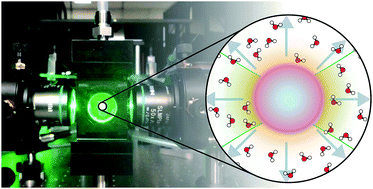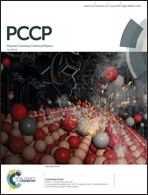Measuring the size and complex refractive index of an aqueous aerosol particle using electromagnetic heating and cavity-enhanced Raman scattering
Abstract
A quantitative understanding of light scattering by small homogeneous particles requires accurate knowledge of particle geometry and complex refractive index, m = n + ik. In weakly absorbing particles, k can be on the order of 10−9, which is well below the detection limit of almost all light scattering based instruments. Here, we describe a dual-beam optical trap that can simultaneously determine n, k, and the radius, s, of weakly absorbing aerosol particles. We utilize cavity-enhanced Raman scattering to determine n and s and electromagnetic heating from the trapping laser itself to determine k. The relationship between particle size, the trapping cell conditions, the parameters of the trapping laser, and electromagnetic heating is thoroughly discussed and it is shown that the proper choice of a light scattering model is necessary to retrieve accurate values of k when fitting measurements. The phenomenon of optical multistability and its connection to thermal locking and thermal jumping is investigated through both modeling and measurements as understanding this behavior is essential when interpreting results from electromagnetic heating experiments. Measurements are made on three different atmospheric aerosol model systems and k as low as 5.91 × 10−9 are found.

- This article is part of the themed collection: 2018 PCCP HOT Articles


 Please wait while we load your content...
Please wait while we load your content...